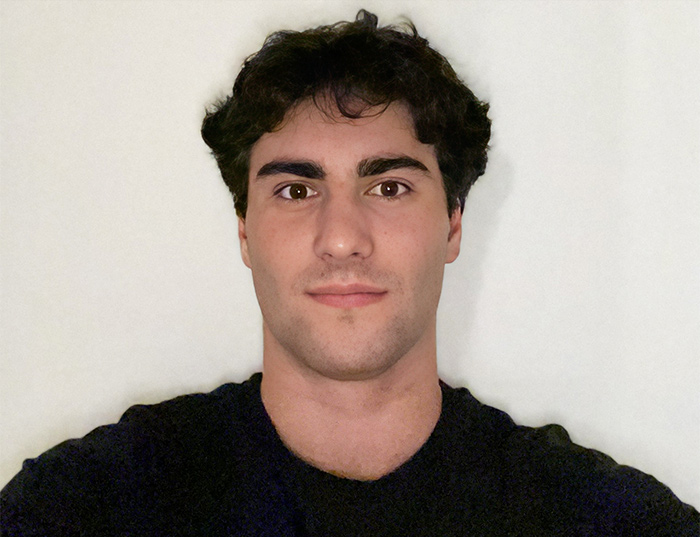In the early morning of July 10, 2024, excavators scooped up tents on the lower field of McGill University. For more than ten weeks, the McGill pro-Palestinian encampment had remained on the institution's doorstep, acting as "a heavily fortified focal point for intimidation and violence."1
By the time it was dismantled, the conditions inside the encampment were grim. Most of its inhabitants were not members of the McGill community, and many overnight occupants were homeless individuals. Illicit narcotics had been sold within encampment walls, and syringes were visible on site; from July 6th-10th, two separate cases of drug overdose occurred. By this time, the camp was also infested with rats.2
Allowing the encampment to reach this perilous state was a mistake in itself, regardless of political stance. Clearly, university President Deep Saini and the McGill administration should have acted to prevent the situation from deteriorating as it did. However, where exactly should this line have been drawn? By chronologically looking back chronologically on McGill's administrative emails to its students and staff, we can get a clear picture of the key events that transpired on the McGill campus and reflect upon the action—or inaction—of the Saini administration.
In an email dated May 10th, the administration expressed initial concerns regarding blocked fire exits and the need for more cooperation with fire prevention officials in verifying health and safety compliance. Furthermore, McGill admitted that the encampment would prevent their spring convocation ceremonies from taking place on the lower field.3 If McGill had followed in the footsteps of other universities, it should have taken decisive action at this point.
For example, encampments at the University of Calgary and the University of Alberta were dismantled in one and two days, respectively.4 This trend of addressing the situation early on was even more prevalent south of the Canadian border; UCLA, Columbia, NYU, and the University of Texas all—after initial hesitation—took immediate and forward approaches to dismantlement.
However, unlike its Canadian and US counterparts, McGill did not act, and in the ensuing two weeks, events associated with the encampment took a profoundly troubling turn. On May 26th, during a larger demonstration, an effigy of Benjamin Netanyahu was hung on the main gates to the university. Disturbingly, the figure was dressed in a striped prison uniform akin to the one worn by the millions of Jews murdered in concentration camps. These two weeks also saw multiple instances of senior administrators being harassed—this included the targeting of personal residences, and the display of red handprints painted to look like blood in university offices. McGill also recorded incidents of discriminatory graffiti and signage on campus.5
Despite all this, Saini still did not take a stand. In fact, in the same email briefing that detailed these events, the McGill President "offered to examine divestment"—effectively pandering to one of the occupants' central demands.6 For McGill, this choice to stand down and engage through dialogue was seen as a step towards peaceful resolution. However, pro-Palestinian organizers repeatedly walked away from the negotiating table, thus blocking a significant pathway for an amicable settlement of the dispute.7 Notably, by this time, other universities, such as Université du Quebec à Montreal (UQAM), had reached dismantling agreements with their encampments. Yet McGill's offer, comparable to that of UQAM and other institutions, was not given the time of day.
On June 6th, the encampment's activities escalated dramatically when protestors forcibly entered the James Administration Building. They blockaded entry doors, vandalized property, and created a barricade, forcing staff to shelter in place. Staff members reported the use of threats and chants of "violence now." This blatant act of aggression and vandalism against university property and intimidation against staff was a significant escalation and one that posed a serious safety risk. One would think that this event would be the last straw. However, when protesters occupied the university's administrative building, the university did nothing but "strongly condemn the use of intimidating, aggressive, harassing, or illegal tactics."8
While the Saini administration might have hoped otherwise, verbal condemnation alone proved ineffective; it did not, despite the administration's evident expectations, curb the threat of violence on campus. As displayed in figure 1, a June 12th social media post by Solidarity for Palestinian Human Rights (SPHR) that featured masked individuals holding assault rifles called for participation in a "revolutionary youth summer program" on the lower field.9 Keep in mind that SPHR is also known for having described the October 7th attacks on Israel as 'heroic.' This incident attracted international media attention, leading to the flagging of the post as a matter of national security. However, once again, despite clear connotations of violence, McGill did not take meaningful action against the encampment, thus once again letting down their Jewish students.
On the evening of July 5th, the tipping point arrived. While spray-painting and breaking the windows of university buildings, protesters assaulted a McGill security agent. This act was an outward and visible manifestation of the violent rhetoric disseminated by the encampment since its inception.10 Now, McGill administrators finally had had enough, and five days later, on July 10th, a hired private security agency and the Montreal Police dismantled the encampment.
In determining the line that should have been drawn, people can and will have differing opinions on exactly what constitutes unacceptable behavior. Those supporting the encampment will claim their charter-protected rights to freedom of expression and assembly under Sections 2(b) and 2(c) were violated, and remind us of the historical prevalence of the university campus as a setting for free expression and protest. Others argue the reverse, that the protesters' actions constitute an overriding of the Charter of Rights and that rising antisemitism and violence on campus justified an immediate response to the encampment.
Pinpointing the exact day that intervention should have occurred can be difficult. One can argue that McGill should have drawn the line at any one of the aforementioned events. Regardless, it is retrospectively clear that McGill acted too late.
The pressing question, however, is why? In a virtual town hall on Aug. 28th, the administration offered various explanations for the untimely response. Saini cited anonymity as a key concern, explaining that "when somebody shows up on our campus with their face covered and they shout antisemitic slogans or do destructive things, and we are told we do not have the right to force them to show identity, we have our hands completely tied behind our backs". Furthermore, he stated that McGill did "not have the authority" to do what was required, and "had to wait until things came to a point where we had gained enough legitimacy to take the matter into our own hands." In assessment of Saini's explanation, McGill professor Eric Caplan explained that this 'hands tied' narrative has some truth, and that Montreal Mayor Valerie Plante "definitely let the school down" by criticizing McGill leadership during an unprecedented time of need for municipal support.
Overall, it is true that the university faced barriers in their handling of this complex and constantly evolving situation. However, it is also true that the next time the McGill administration is called upon to stand up for themselves and their students, the events that transpired on McGill's lower field will be recalled with concern. When faced with restrictions to campus access, health and safety concerns, antisemitic demonstrations, violent rhetoric, employee harassment, vandalism, a university building occupation, and threats to national security, the university did not draw a line. Consequently, we are all now acutely aware of the backbone of the Saini administration.
- Deep Saini, email message to McGill students and staff, 10/07/2024
- Ibid.
- Deep Saini, email message to McGill students and staff, 10/05/2024
- https://universityaffairs.ca/features/feature-article/timeline-encampments/
- Deep Saini, email message to McGill students and staff, 29/05/2024
- Ibid.
- Ibid.
- Deep Saini, message to McGill students and staff, 7/06/2024
- Deep Saini, email message to McGill students and staff, 14/06/2024


